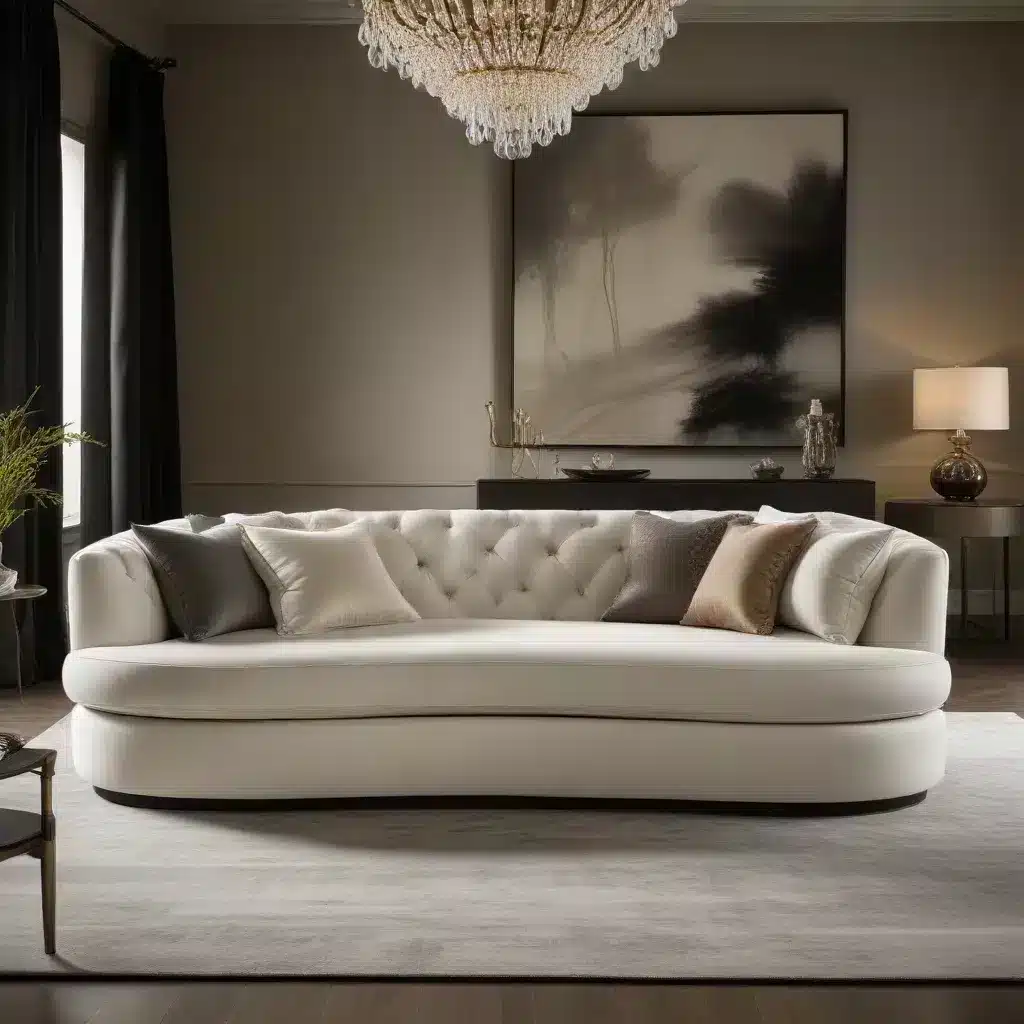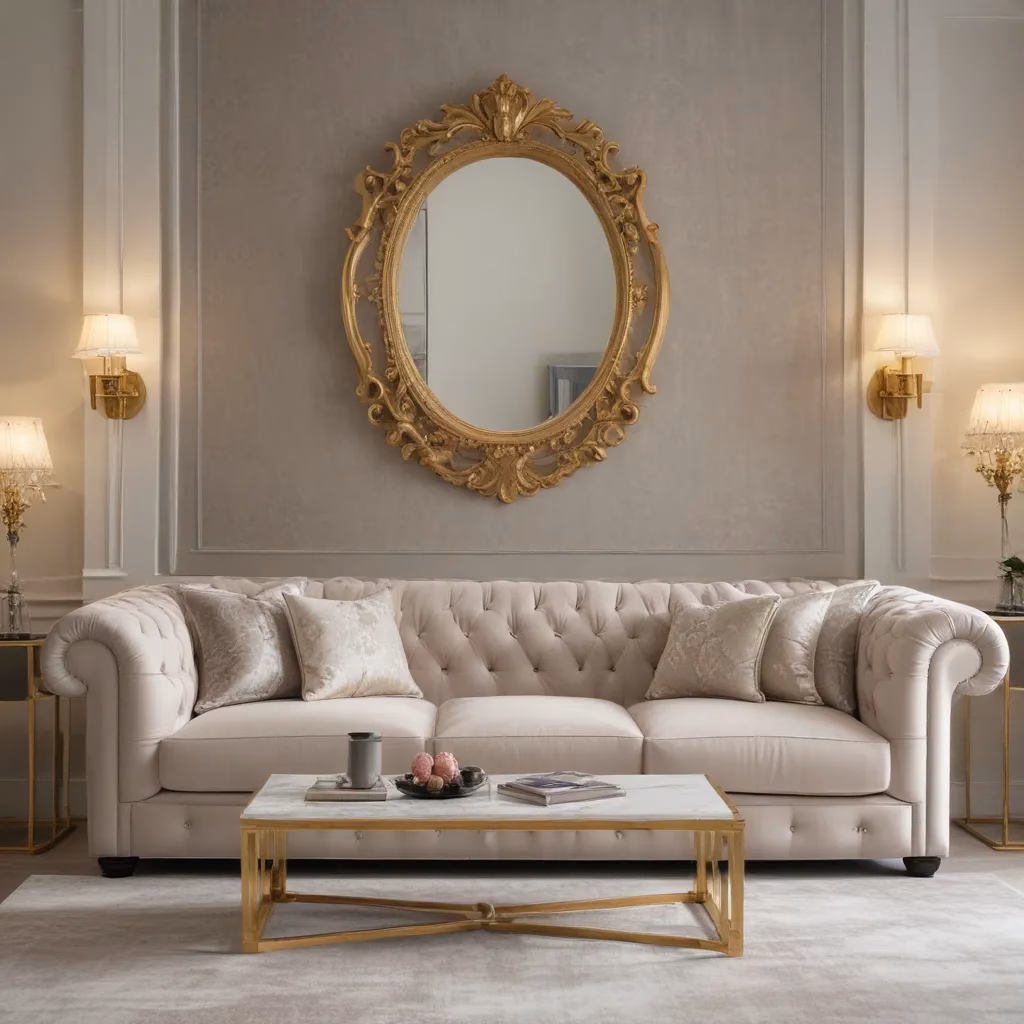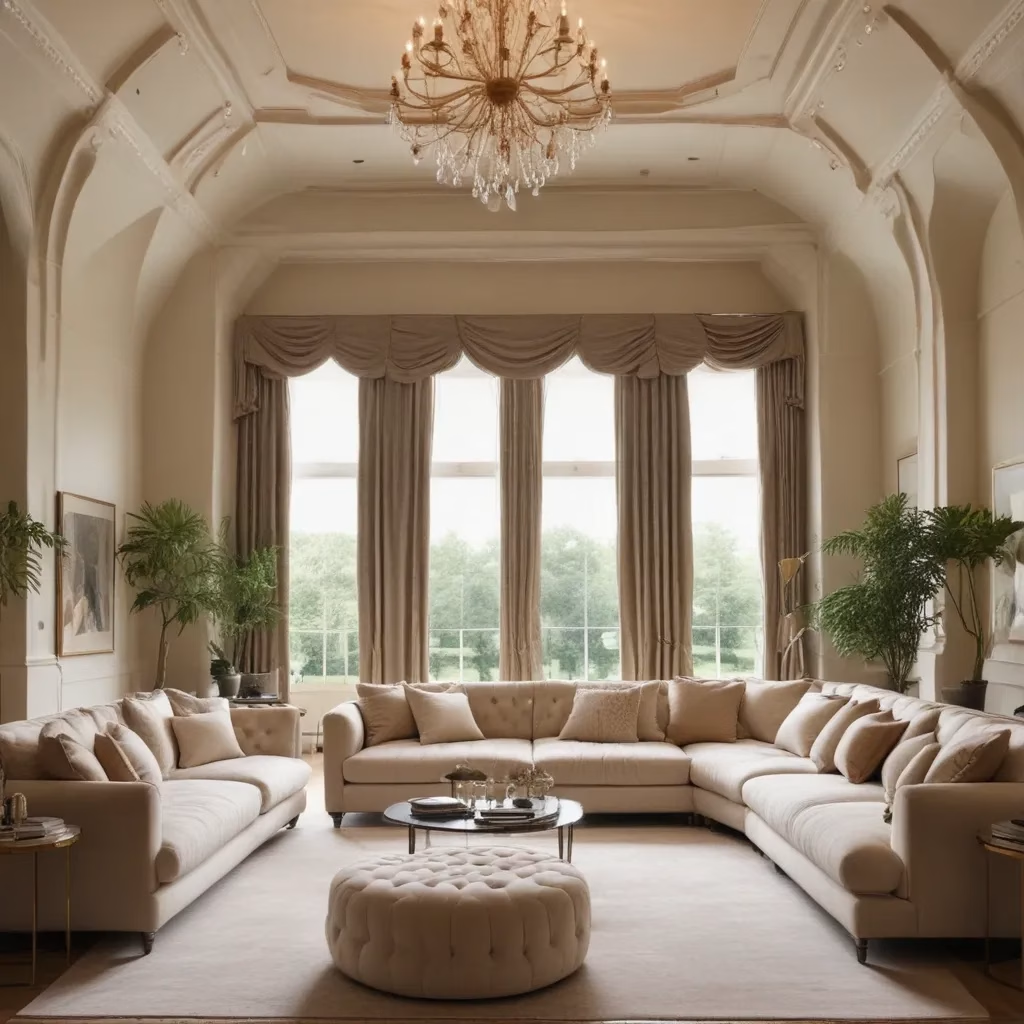
The Art of Sofa Selection
As a furniture specialist with years of experience under my belt, I’ve seen countless trends come and go. But one thing remains constant: the sofa is the centerpiece of any living space. It’s where we unwind after a long day, gather with friends and family, and create lasting memories. That’s why choosing the right sofa is crucial for both comfort and style.
When I first started in this industry, I was overwhelmed by the sheer variety of options available. From traditional Chesterfields to sleek modern designs, the choices seemed endless. Over time, I’ve developed a keen eye for quality and a deep understanding of what makes a sofa truly spectacular.
One of the first things I always tell my clients is to consider their lifestyle. Are you a family with young children and pets? You might want to opt for a durable fabric that can withstand spills and scratches. Do you love to entertain? A sectional might be the perfect choice to accommodate guests. By taking the time to reflect on how you’ll use your sofa, you can narrow down your options and find the perfect fit for your home.
Upholstery Matters: Choosing the Right Fabric
When it comes to sofas, the devil is in the details – and that includes the upholstery. I’ve seen many beautiful sofas ruined by poor fabric choices, so this is an area where I always encourage my clients to invest wisely.
Natural fibers like cotton and linen are popular choices for their breathability and comfort. However, they can be prone to wrinkling and staining. Synthetic options like polyester and microfiber offer durability and easy maintenance, making them ideal for high-traffic areas or homes with children and pets.
For those seeking luxury, leather is hard to beat. It ages beautifully, developing a rich patina over time. But it’s important to note that leather requires regular care to maintain its appearance. I always recommend using a leather conditioner every few months to keep it supple and prevent cracking.
Here’s a quick comparison of popular upholstery options:
| Fabric Type | Durability | Maintenance | Cost |
|---|---|---|---|
| Cotton | Moderate | Moderate | $$ |
| Linen | Low | High | $$$ |
| Polyester | High | Low | $ |
| Microfiber | High | Low | $$ |
| Leather | High | Moderate | $$$$ |
Remember, the best fabric for you depends on your specific needs and preferences. Don’t be afraid to ask for fabric samples and test them out in your home before making a decision.
The Framework of Comfort: Sofa Construction
While the upholstery may be what catches the eye, the true test of a sofa’s quality lies in its construction. I’ve had clients who were initially drawn to a beautiful sofa, only to find it uncomfortable or falling apart after a year of use. That’s why I always stress the importance of understanding what’s beneath the surface.
A well-constructed sofa starts with a solid frame. Hardwoods like oak, ash, or beech are ideal, as they provide stability and longevity. Avoid sofas with frames made from particleboard or metal, as these can warp or break over time.
The suspension system is another critical component. High-quality sofas typically use eight-way hand-tied springs, which provide excellent support and distribute weight evenly. Sinuous springs are a more affordable option that can still offer good comfort, especially in modern, streamlined designs.
When it comes to cushions, there are several options to consider:
- Foam: Offers a firm, supportive feel and retains its shape well.
- Down: Provides a luxurious, soft feel but requires regular fluffing.
- Polyester fiber: An affordable option that’s hypoallergenic but may flatten over time.
- Combination fill: Often the best of both worlds, combining a foam core with a down or fiber wrap for comfort and durability.
I always recommend testing out different cushion types to find what feels best for you. Remember, a sofa that looks great but feels uncomfortable will quickly become a source of frustration.
Design Trends: Balancing Style and Functionality
As someone who’s been in the furniture industry for years, I’ve witnessed countless design trends come and go. While it’s tempting to choose a sofa based solely on current fashions, I always advise my clients to consider longevity. After all, a sofa is a significant investment, and you want it to stand the test of time both in terms of durability and style.
That said, there are some current trends that I believe strike a beautiful balance between contemporary flair and timeless elegance. One such trend is the resurgence of curved sofas. These pieces add a soft, organic feel to a room and can help create a more intimate seating arrangement. I’ve found that curved sofas work particularly well in open-plan living spaces, as they can help define separate areas without the need for walls.
Another trend I’m fond of is the use of bold, jewel-toned fabrics. While neutral sofas will always have their place, I’ve seen an increasing number of homeowners opting for rich emerald greens, sapphire blues, and deep burgundies. These colors can add depth and character to a room, especially when paired with neutral walls and accessories.
For those who prefer a more understated look, I’ve noticed a growing appreciation for sofas with clean lines and minimalist designs. These pieces often feature low profiles and sleek metal legs, making them perfect for modern or Scandinavian-inspired interiors. What I love about this trend is its versatility – these sofas can easily be dressed up or down with throw pillows and blankets to suit changing tastes or seasons.
The Importance of Scale and Proportion
One of the most common mistakes I see homeowners make is choosing a sofa that’s either too large or too small for their space. It’s an easy error to make, especially when shopping online or in a large showroom where it’s difficult to gauge scale.
To avoid this pitfall, I always recommend measuring your space carefully before shopping. Consider not just the dimensions of the room, but also any doorways or staircases the sofa will need to pass through during delivery. It’s heartbreaking to fall in love with a piece only to find it won’t fit through your front door!
When it comes to proportion, think about how the sofa will relate to other pieces in the room. A large, overstuffed sofa can overwhelm a small space, while a dainty loveseat might look lost in a grand living room. I often suggest using painter’s tape to outline the dimensions of potential sofas on your floor. This simple trick can give you a much better sense of how the piece will fit in your space.
Remember, too, that the height of your sofa can have a big impact on the feel of your room. Low-profile sofas can make ceilings appear higher, while taller backs can create a cozier, more intimate atmosphere. Consider your room’s architecture and your personal preferences when making this choice.
Caring for Your Sofa: Maintenance Tips for Longevity
As someone who’s seen countless beautiful sofas fall into disrepair due to neglect, I can’t stress enough the importance of proper maintenance. A well-cared-for sofa can last for decades, becoming a cherished part of your home and potentially even an heirloom piece.
First and foremost, regular vacuuming is essential. Use the upholstery attachment on your vacuum cleaner to remove dust and debris from both the surface and crevices of your sofa. For leather sofas, a soft brush attachment is preferable to avoid scratching.
Rotating cushions is another simple yet effective way to extend the life of your sofa. This helps distribute wear evenly, preventing one area from becoming overly compressed or faded. I recommend doing this every few months, or more frequently for heavily used sofas.
For fabric sofas, it’s wise to treat spills immediately. Blot (don’t rub!) the stain with a clean, white cloth to absorb as much liquid as possible. For more stubborn stains, consult the manufacturer’s care instructions or seek professional cleaning services. It’s always better to address stains promptly rather than waiting until they set in.
Leather sofas require special care to maintain their appearance and prevent cracking. Use a leather conditioner every 6-12 months to keep the material supple. Avoid placing leather sofas in direct sunlight, as this can cause fading and drying.
Finally, consider using throws or slipcovers to protect high-wear areas, especially if you have pets or children. These can be easily washed or replaced, extending the life of your sofa’s upholstery.
The Role of Sofas in Interior Design
Throughout my career, I’ve come to appreciate the sofa not just as a functional piece of furniture, but as a key element in interior design. A well-chosen sofa can set the tone for an entire room, influencing everything from color schemes to traffic flow.
When working with clients on their living spaces, I often start with the sofa as a focal point. Its size, shape, and color can dictate many other design decisions. For example, a large sectional might call for a more open floor plan, while a pair of smaller sofas could create a more formal, symmetrical arrangement.
Color is another crucial consideration. A neutral sofa provides a versatile backdrop for changing decor trends, allowing you to update your look with accessories like throw pillows and artwork. On the other hand, a boldly colored sofa can serve as a statement piece, anchoring the room’s entire color palette.
I’ve found that the style of sofa can also influence the overall feel of a space. A tufted Chesterfield lends a classic, sophisticated air, while a low-slung modular sofa creates a more relaxed, contemporary vibe. By carefully considering these elements, you can use your sofa to help create the atmosphere you desire in your home.
Sustainable Sofas: Eco-Friendly Options
In recent years, I’ve seen a growing interest in sustainable furniture options, and sofas are no exception. Many of my clients are now seeking eco-friendly alternatives that align with their values without compromising on style or comfort.
One option I often recommend is sofas made with FSC-certified wood. This certification ensures that the wood used in the frame comes from responsibly managed forests. It’s a small detail that can make a big difference in terms of environmental impact.
For upholstery, there are now many sustainable fabric options available. Organic cotton, hemp, and bamboo are all excellent choices that are both eco-friendly and durable. I’ve also seen an increase in the use of recycled materials, such as polyester made from plastic bottles, which can be surprisingly soft and luxurious.
Another aspect of sustainability to consider is the lifespan of the sofa. Investing in a high-quality piece that will last for many years is often more environmentally friendly than buying cheaper furniture that needs to be replaced frequently. Look for sofas with sturdy construction and timeless designs that won’t quickly go out of style.
Some manufacturers are also offering take-back programs, where they’ll recycle or refurbish your old sofa when you’re ready for a new one. This helps to reduce waste and keep furniture out of landfills. It’s always worth asking about these programs when shopping for a new sofa.
The Future of Sofa Design
As someone who’s been in the furniture industry for many years, I’m always excited to see how sofa design evolves. While classic styles will always have their place, I’ve noticed some interesting trends emerging that point to the future of sofa design.
One of the most significant developments I’ve observed is the integration of technology into sofas. From built-in USB charging ports to hidden speakers, these “smart sofas” are designed to meet the needs of our increasingly connected lives. While these features can be convenient, I always advise my clients to consider whether they’ll still find them useful in five or ten years’ time.
Another trend I’m seeing is a move towards modularity and flexibility. As urban living spaces become smaller and people move more frequently, there’s a growing demand for sofas that can adapt to different spaces and needs. These modular designs allow you to add or remove sections, or even reconfigure the entire sofa, to suit your changing lifestyle.
Sustainability is also shaping the future of sofa design. I’m seeing more manufacturers experimenting with innovative, eco-friendly materials like 3D-knitted fabrics that produce zero waste. There’s also a growing interest in circular design principles, where sofas are created with eventual disassembly and recycling in mind.
Lastly, I’m noticing a trend towards sofas that prioritize health and wellness. This includes designs that promote better posture, fabrics that are hypoallergenic or have air-purifying properties, and even sofas with built-in fitness features. While some of these innovations may seem gimmicky, I believe we’ll continue to see a focus on how our furniture can contribute to our overall well-being.
Making Your Final Decision
After all these considerations, you might feel overwhelmed by the choices available. But remember, choosing a sofa should be an enjoyable process, not a stressful one. Here are some final tips I always share with my clients:
-
Trust your instincts: While it’s important to consider practical factors, don’t ignore your emotional response. If a sofa makes you feel happy and comfortable, that’s a good sign.
-
Take your time: Don’t rush into a purchase. Sit on different sofas, feel the fabrics, and imagine how they’ll fit into your life.
-
Consider your long-term plans: Are you likely to move in the next few years? Do you plan on starting a family? These factors can influence your choice.
-
Don’t forget about delivery and assembly: Make sure you understand what’s involved in getting the sofa into your home and set up.
-
Read reviews: While personal preferences vary, customer reviews can give you valuable insights into the durability and comfort of a sofa over time.
-
Understand the return policy: Even with careful consideration, sometimes a sofa just doesn’t work out. Know your options before you buy.
Remember, the perfect sofa is out there waiting for you. With these insights and a bit of patience, you’ll find a piece that not only looks beautiful in your home but also provides comfort and joy for years to come.
For more inspiration and expert advice on finding your perfect sofa, visit Sofa Spectacular. Our team is always here to help you navigate the world of sofas and find the piece that’s just right for you.



